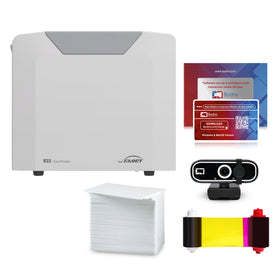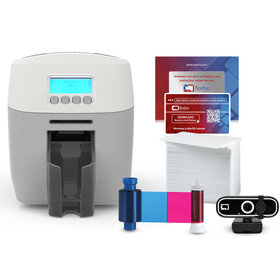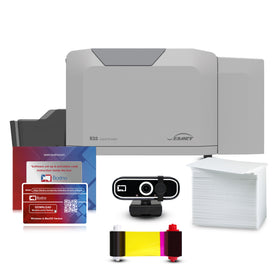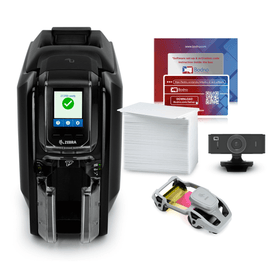Most ID card printers these days come with laminating features by default or have the option to allow laminating with a simple upgrade. All popular ID card manufacturers such as IDP, Magicard, Fargo, Evolis, and Zebra ID printers have advanced models that offer high-quality lamination to help add to the security and durability of printed ID cards and badges. In fact, there are many advantages to laminating ID cards. Below are some of the underlying benefits of laminating id cards to help you decide whether this feature is something you should consider adding the next time you are buying an ID card printer.
Improved Security
Lamination is the process of adding a layer of protective laminate to the composite, PVC, or synthetic paper ID card. This laminate is usually clear but you can also add an image or holographic foil in order to help add to the security of your printed ID cards. With that in mind, lamination helps protect the information printed on the card from tampering.
Ease of Maintenance
Adding a layer of laminate on ID cards also helps prevent any dust and grime buildup on the surface of the cards. Any dirt can be easily wiped off from the ID cards by using a clean cloth and a mild soap solution. Not only that but laminating also makes ID cards the water-resistant, making cleaning and maintaining ID cards and badges very easy.
Better Life
Laminating ID cards can help make them last much longer in comparison to those without a protective coating. By laminating ID cards you ensure that the print quality remains the same for a long time while also making the card stronger through the added thickness that lamination adds to the card. Usually, lamination adds around 5mm to 10mm of thickness to the ID card, helping protect it from the common day-to-day damages such as bending and cracking.
It is also very easy to add a protective layer onto ID cards if you have a lamination-enabled printer. Generally, they add a protective laminate right after printing the text and/or image on the card. By having the two processes in a single machine you cut down on the time it takes to create an ID card than having printed the ID cards and laminating them separately after they are printed.
Above all, laminating ID cards can be much more cost-effective for your business in the long term. Although you can always issue replacement ID cards and badges, lamination protects the originally issued ones from environmental damages, scratching, and other usual wear and tear. This helps mitigate the hassle of printing any replacement cards. Not only that, but laminated ID cards always look more professional than non-laminated ones. Remember that demonstrating professionalism at a job site is one of the main purposes of issuing ID cards to your employees.













 Software
Software Upgrades
Upgrades Support Plans
Support Plans Self Serve
Self Serve Printer Setup
Printer Setup USB License
USB License 



